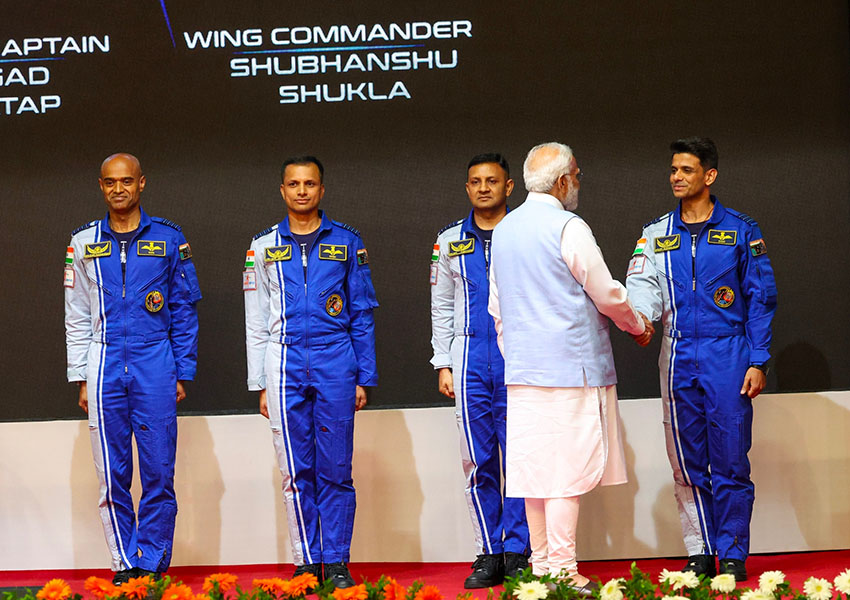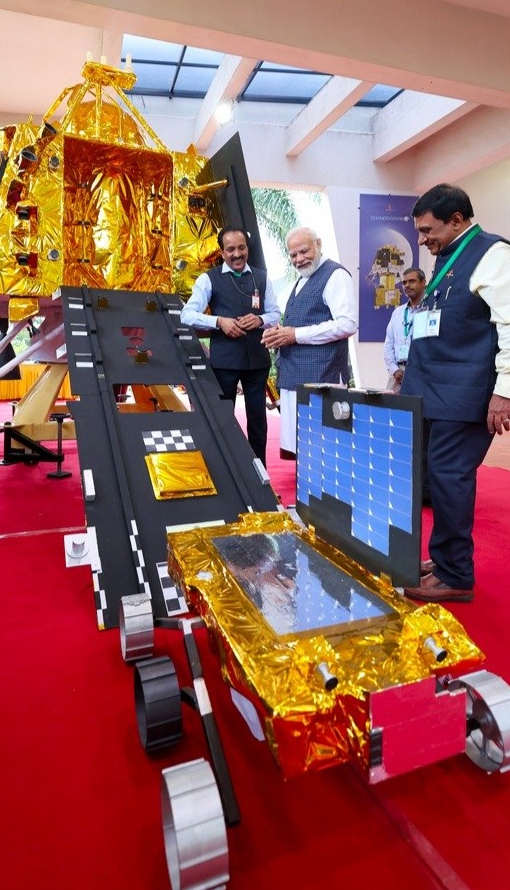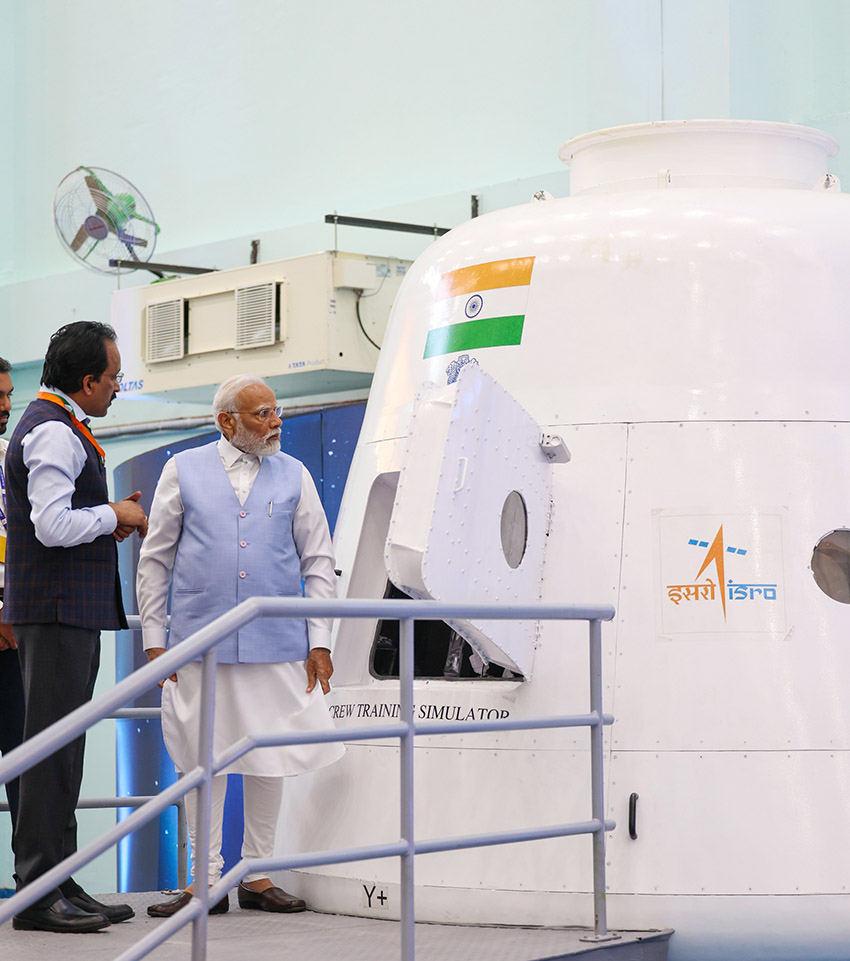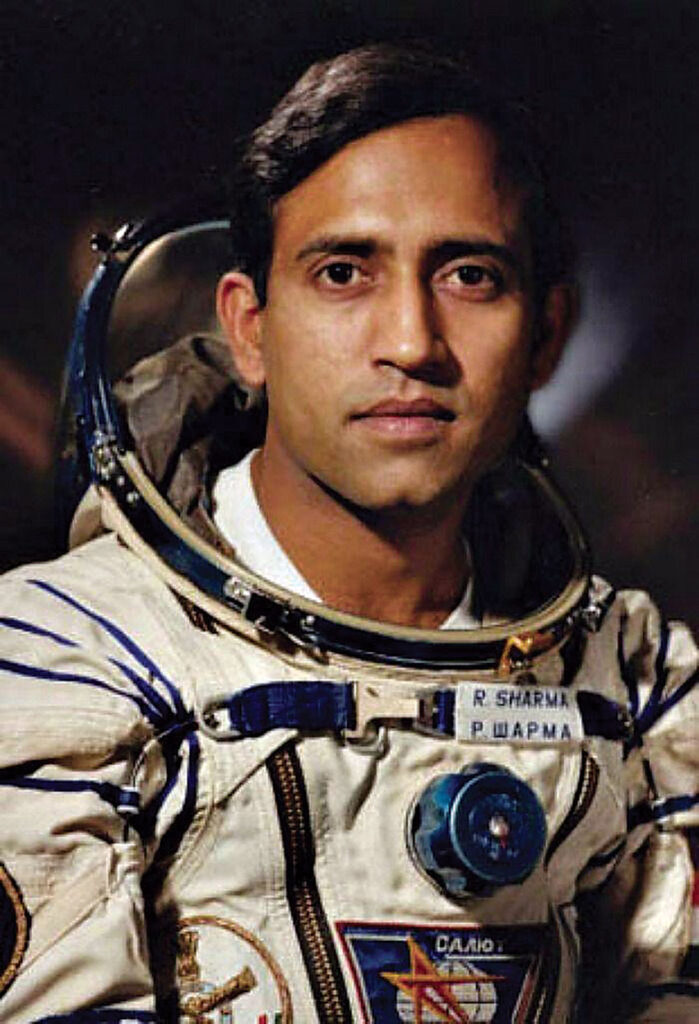Prime Minister Modi names Four Astronauts for India’s Gaganyaan Human Space Flight
-
All of them are IAF Test Pilots from ASTE
-
Training for Space Missions done at ISRO and Russian facilities
By Gulshan Luthra
New Delhi. Four proud Tests Pilots of the Indian Air Force (IAF) were today named for India’s first Human Space Flight, and awarded Astronaut Wings by Prime Minister Narendra Modi.

The Prime Minister interacted with them at the Vikram Sarabhai Space Centre (VSSC) in Thiruvananthapuram in India’s southern state of Kerala, congratulated them, wished them luck, and said “You are the pride of India.” There was applause from everyone, particularly the scientists of Indian Space Research Organisation (ISRO), the overall apex body for India’s space missions since it was set up in 1969.

‘I am happy that today I got the opportunity to meet these astronauts and present them to the country….You are the pride of today’s India.”
Notably, India’s Space and Nuclear programmes are controlled directly by the Prime Minister’s Office (PMO), and both these programmes have progressed remarkably with no shortage of encouragement and funds. In a tweet on X by PMO, Modi said “India’s success in the Space Sector is sowing the seeds of scientific temperament in the country’s younger generation.”

Astronauts the world over are invariably Test Pilots, trained intensively various aircraft and systems with high medical rating. In India’s that is done by IAF’s Institute of Aviation Medicine (IAM), located within the ASTE facility in Bangalore. Three of the four pilots would be launched in the space mission, planned for 2025 or 2026, and the fourth would be on standby as Reserve.

India’s first astronaut, or cosmonaut as he was launched by the Soviet Union in 1984, was Wg Cdr Rakesh Sharma, also a Test Pilot trained at ASTE.
According to Air Marshal Anil Chopra (Retd), Director General of IAF’s think tank Centre for Air Power, the selection process for Astronauts is very rigourous even though all the candidates are among the finest as they have to test and certify every aircraft and system before it is handed over for operational flying to IAF squadrons. They have totake every machine to its limit so that in case of an emergency, the crew of an aircraft can ensure his own and the machine’s safety, and if a crash is imminent, then maneuver it away from populated areas.
“Of course, to man spacecraft, the astronauts have to have special skills and the ability of survive dangerous missions,” said Air Marshal Chopra, who is himself a distinguished Test Pilot.
The four astronauts have been selected out of a panel of about 20 young and bright Test pilots.
All the four Gaganyaan astronauts have received special mission training at ISRO’s own facilities as well as one year of training in Russia.
ISRO scientists have gained valuable insight and experience shared by both by Russia’s Roscosmos and the US NASA (National Aeronautics and Space Administration).





